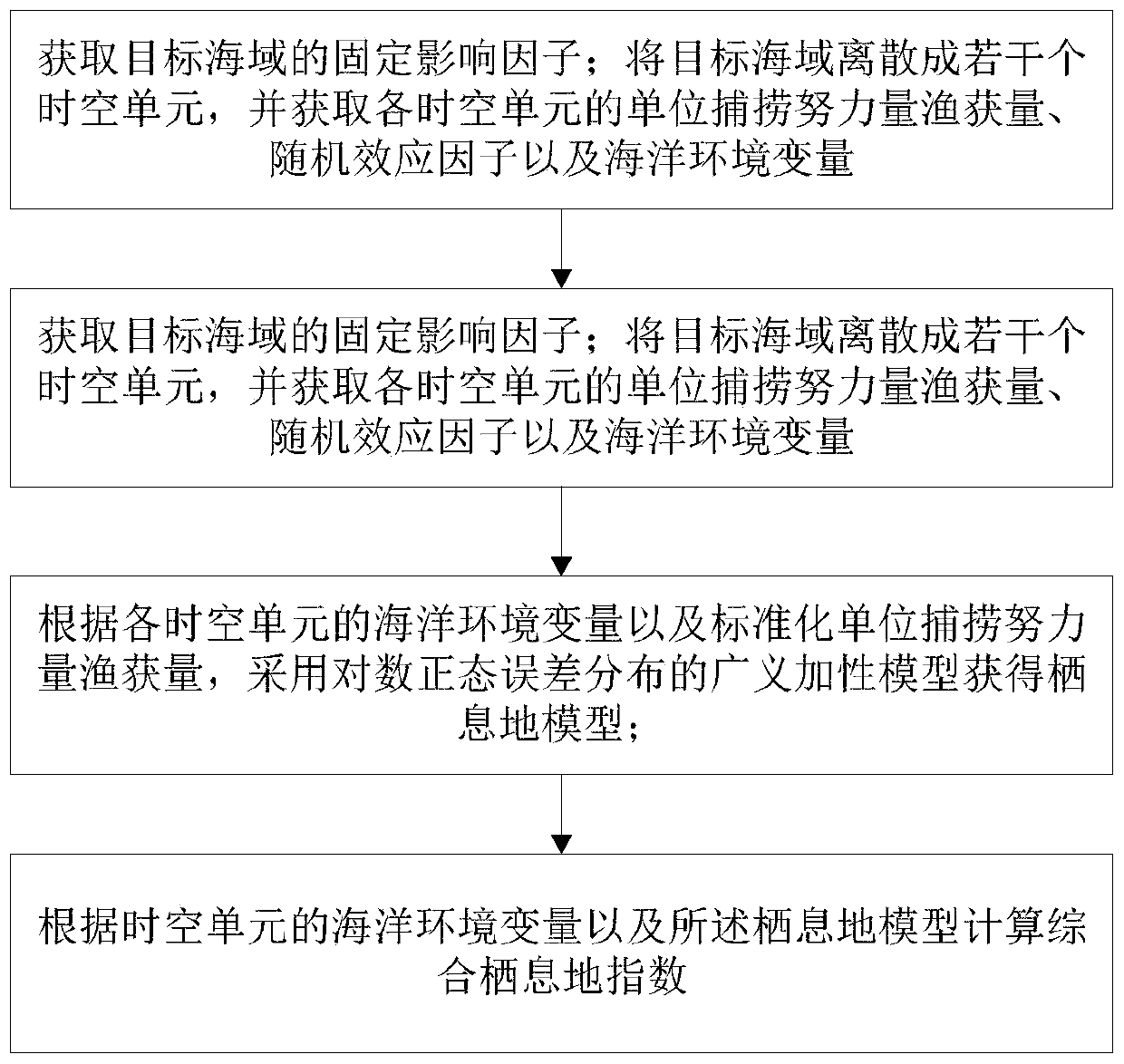Tuna habitat quantitative evaluation method
A technique for quantitative assessment and habitat, applied in the field of aquaculture, can solve problems in seine fishery and other problems, and achieve the effect of small deviation of habitat characteristics
- Summary
- Abstract
- Description
- Claims
- Application Information
AI Technical Summary
Problems solved by technology
Method used
Image
Examples
Embodiment
[0049] Example: such as figure 1 Shown, the embodiment of the present invention comprises a kind of tuna habitat quantitative evaluation method, it comprises the following steps:
[0050] (S1) Obtain the fixed impact factor of the target sea area; discretize the target sea area into several space-time units, and obtain the unit fishing effort catch, random effect factor and marine environment variables of each space-time unit;
[0051] (S2) Using the generalized mixed effect model with Gaussian distribution as the error term, standardize the catch per unit fishing effort according to the fixed impact factor and the random effect factor, and obtain the standardized catch per unit fishing effort;
[0052] (S3) According to the marine environment variables of each spatio-temporal unit and the catch of standardized unit fishing effort, the habitat model is obtained by using a generalized additive model with a log-normal error distribution;
[0053] (S4) Calculating a comprehensiv...
PUM
 Login to View More
Login to View More Abstract
Description
Claims
Application Information
 Login to View More
Login to View More - R&D Engineer
- R&D Manager
- IP Professional
- Industry Leading Data Capabilities
- Powerful AI technology
- Patent DNA Extraction
Browse by: Latest US Patents, China's latest patents, Technical Efficacy Thesaurus, Application Domain, Technology Topic, Popular Technical Reports.
© 2024 PatSnap. All rights reserved.Legal|Privacy policy|Modern Slavery Act Transparency Statement|Sitemap|About US| Contact US: help@patsnap.com








